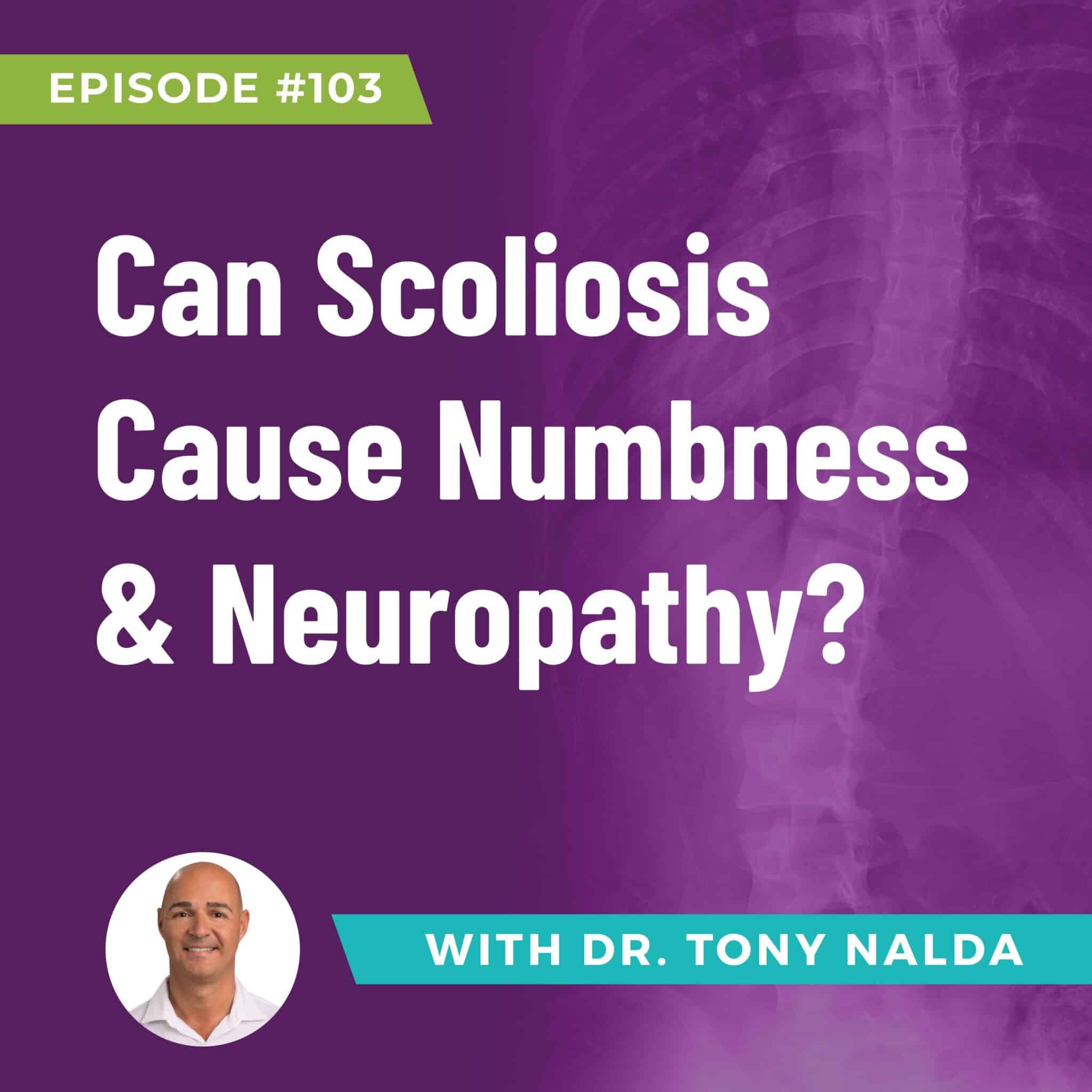Episode 103: Can Scoliosis Cause Numbness & Neuropathy?
For individuals grappling with scoliosis, a myriad of concerns can arise, particularly when experiencing symptoms like numbness or neuropathy in their extremities. When dealing with scoliosis, many people wonder how common it really is.
Understanding Scoliosis
Scoliosis is when your spine curves to the side instead of staying straight. This sideways curve can happen in different parts of your spine, like your lower back, upper back, or neck. It's important to note that scoliosis also involves a twist in the spine. To be called scoliosis, the curve needs to be at least 10 degrees or more.
As scoliosis progresses, it can squeeze and stretch the nerves in your spine. These nerves run from your brain to the rest of your body, so when they're affected, it can cause problems like numbness or tingling in your legs and feet. This happens because the twisted spine puts pressure on these nerves, making them send weird signals to your brain.
Spinal Stenosis and Disc Herniation
Scoliosis can also lead to something called spinal stenosis, which is when the spaces where nerves come out of your spine become smaller. This can make nerve compression worse. Additionally, scoliosis can cause the discs in your spine to bulge or press on nerves, adding to the nerve trouble.
If you're experiencing numbness or nerve problems because of scoliosis, it's essential to act early and look into treatments that focus on reducing the curve in your spine. Simply masking the pain won't solve the problem in the long run. Instead, treating the cause by reducing the curve can help your body heal naturally.
Whether you're just learning about scoliosis or dealing with nerve issues because of it, taking proactive steps is key. By addressing the root cause of scoliosis and reducing the curve, you can pave the way for better spinal health and overall well-being.
To learn more about scoliosis and proactive treatment options, listen to Dr. Tony Nalda's podcast.
Artlist.io 847544
Podcast: Play in new window | Download
Subscribe: RSS
Dr. Tony Nalda
DOCTOR OF CHIROPRACTIC
After receiving an undergraduate degree in psychology and his Doctorate of Chiropractic from Life University, Dr. Nalda settled in Celebration, Florida and proceeded to build one of Central Florida’s most successful chiropractic clinics.
His experience with patients suffering from scoliosis, and the confusion and frustration they faced, led him to seek a specialty in scoliosis care. In 2006 he completed his Intensive Care Certification from CLEAR Institute, a leading scoliosis educational and certification center.
About Dr. Tony Nalda
 Ready to explore scoliosis treatment? Contact Us Now
Ready to explore scoliosis treatment? Contact Us Now








